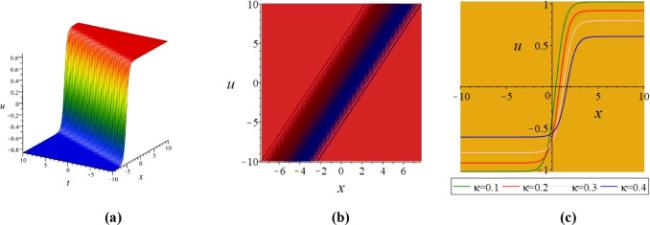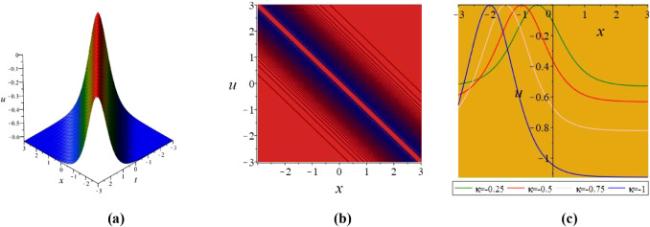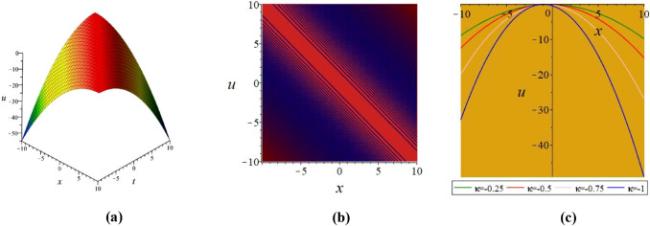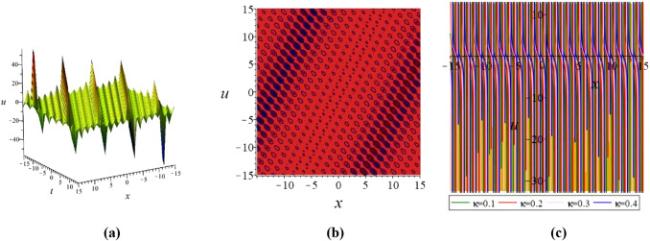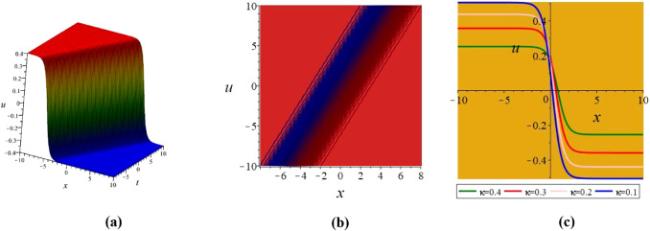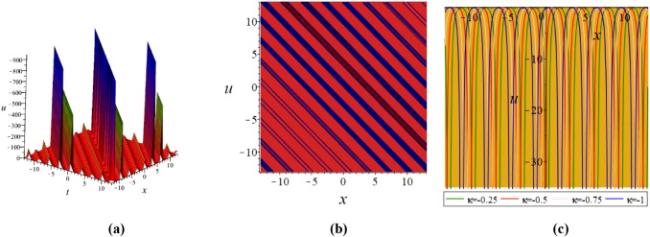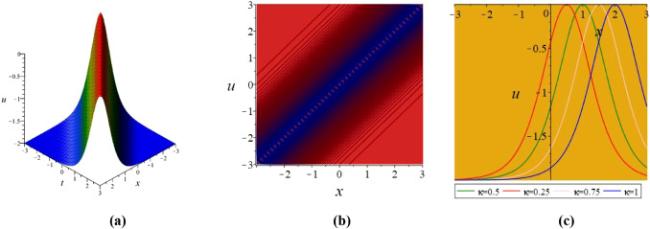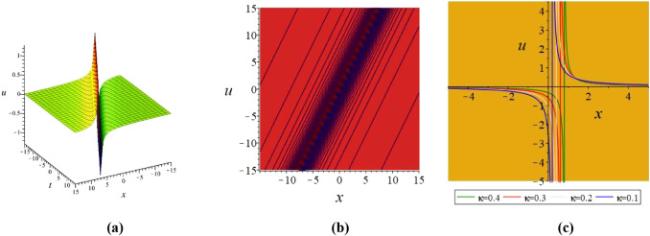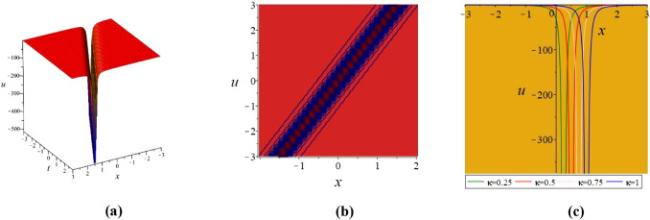Khater et al
[36]. analyzed the nonlinear Kolmogorov-Petrovskii-Piskunov model of fractional order by the use of the Adomian decomposition procedure and numerical approach. Chu et al
[37]. investigated the general (2 + 1)-dimensional wave model arise in shallow-water using the simplest calculation approach and the advanced Kudryashov scheme. Khater et al
[38]. studied the semi-analytical and analytical solutions to the fractional HIV-1 infection of CD4+ T
-cells, and also approximate wave solutions to the complex nonlinear Fokas-Lenells models
[39] of short pulses in optical fibers, the semi-exact estimations of the nonlinear Phi-4 equation
[40], the numerical simulation of the time-space fractional telegraphic nonlinear equation
[41]. Khater and Ghanbari
[42] investigated the soliton solutions to the Chaffee-Infante model using five techniques. Khater et al
[43]. scrutinized numerical estimations to the modified BBM model and examined the stability property of the attained solutions, abundant novel soliton solutions to the Klein-Fock-Gordon equation
[44], the analytical solutions to the perturbed Schrödinger nonlinear equation
[45], the analytical and semi-exact estimations to the time-fractional Cahn-Allen model
[46], the numerical estimations to the Klein-Gordon-Zakharov equation
[47], the analytical accurate traveling wave solutions of the higher-dimensional Schrödinger nonlinear model
[48], the semi-analytical and exact estimation to the fractional quadratic-cubic Schrödinger equation
[49]. Khater
[50] unraveled abundant breather solutions to the Vakhnenko-Parkes equation by means of a couple of analytical approaches. Khater et al
[51]. investigated the numerical solutions of two bio-mathematical and statistical fractional order nonlinear equations. Khater and Lu
[52] searched numerical and exact solutions to the space and time fractional nonlinear telegraphic model using the trigonometric-quantic-B-spline method. Khater and Ahmed
[53] evaluated the solutions of the Klein-Gordon-Zakharov nonlinear model by exponential cubic B-spline schemes. Khater et al
[54]. derived bright-dark soliton to the (1 + 1)-dimensional nonlinear Kaup-Kupershmidt model utilizing modified F-expansion approach. Yue et al
[55]. perused analytical estimations to the fractional Hirota-Satsuma models via the modified Kudryashov and the enhanced simplest equation tools. Li et al
[56]. probed numerical estimations to the (2 + 1)-dimensional KPBBM model by employing the modified direct algebraic method. Khater and Alabdali
[57] studied numerical and analytical wave solutions of (2 + 1)-dimensional Fisher-KolmogorovPetrovskii-Piskunov model by imposing the modified Kudryashov, trigonometric-quantic B-spline, and modified direct algebraic schemes.


